How to arrange furniture in a small living room — we love these 8 expert tips
Tweak your space and arrange furniture in a small living room so it's just right

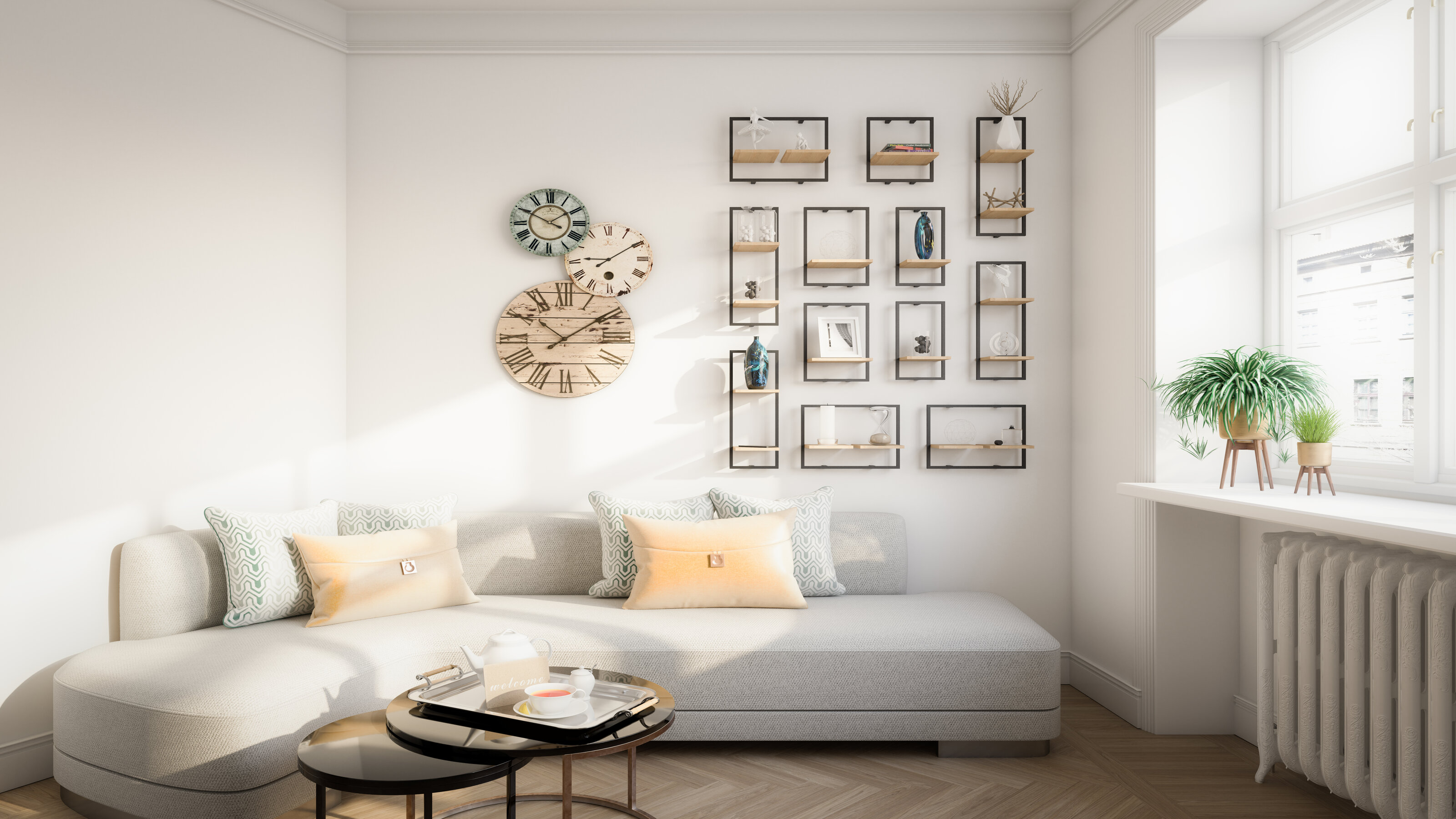
To arrange furniture in a small living room without wasting space or having it end up feeling crowded can be tricky. That’s why it’s so important to map out your furniture layout ahead of moving things, and guarantee your placement pops with purpose.
Approaching your home decor — including furniture arrangement — with intention can make a huge difference how your room looks, but how it gets used too, interior pros tell us.
To learn how to arrange furniture in a small living room layout, we picked the brilliant minds of our design experts for their top tips, and did they ever come through. With fabulous ideas for rugs, furniture, artwork, and more, don’t miss this.
How to arrange furniture in a small living room
Let‘s cut to the chase. There is no one-size-fits-all solution — how you place your furniture depends entirely on your small living room.
That being said, there are a few things worth considering so that you can take full advantage of the space you do have, including picking design elements to elongate your room.
These eight expert-approved tips for arranging furniture in a small living room, including key decorating pointers for maximizing your space, can’t be missed.
1. Incorporate versatile pieces

When purchasing small-space furniture, one of the most important factors to consider is choosing pieces that serve more than one purpose. "They might have surfaces for displaying items or storage for holding items you don’t want to be visible,” says Alex Bass, an interior designer, art curator, and founder of Salon 21.
Get small space home decor ideas, celeb inspiration, DIY tips and more, straight to your inbox!
“I also recommend getting a couch or coffee table with an ottoman that can be moved around depending on how you’re using the space,” Alex adds. This neutral storage ottoman from Wayfair is super handy in a small living room for storing throw blankets and magazines.
Incorporating small accent chairs that can be easily moved are a good idea to accomodate visitors, or day-to-day use with ease.
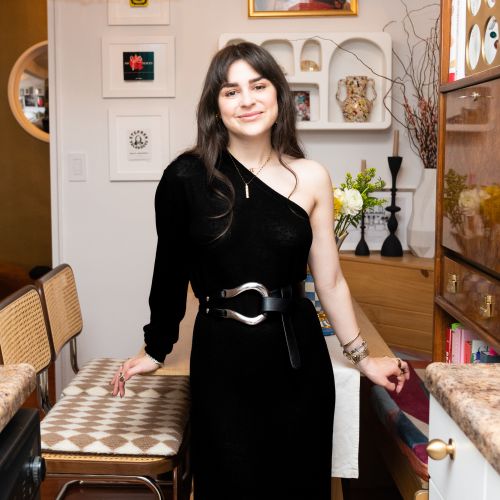
Alex Bass is an interior designer, art curator, and founder of Salon 21, a NYC-based fine art and design studio that provides curated cultural experiences for the contemporary consumer.
2. Create a focal point
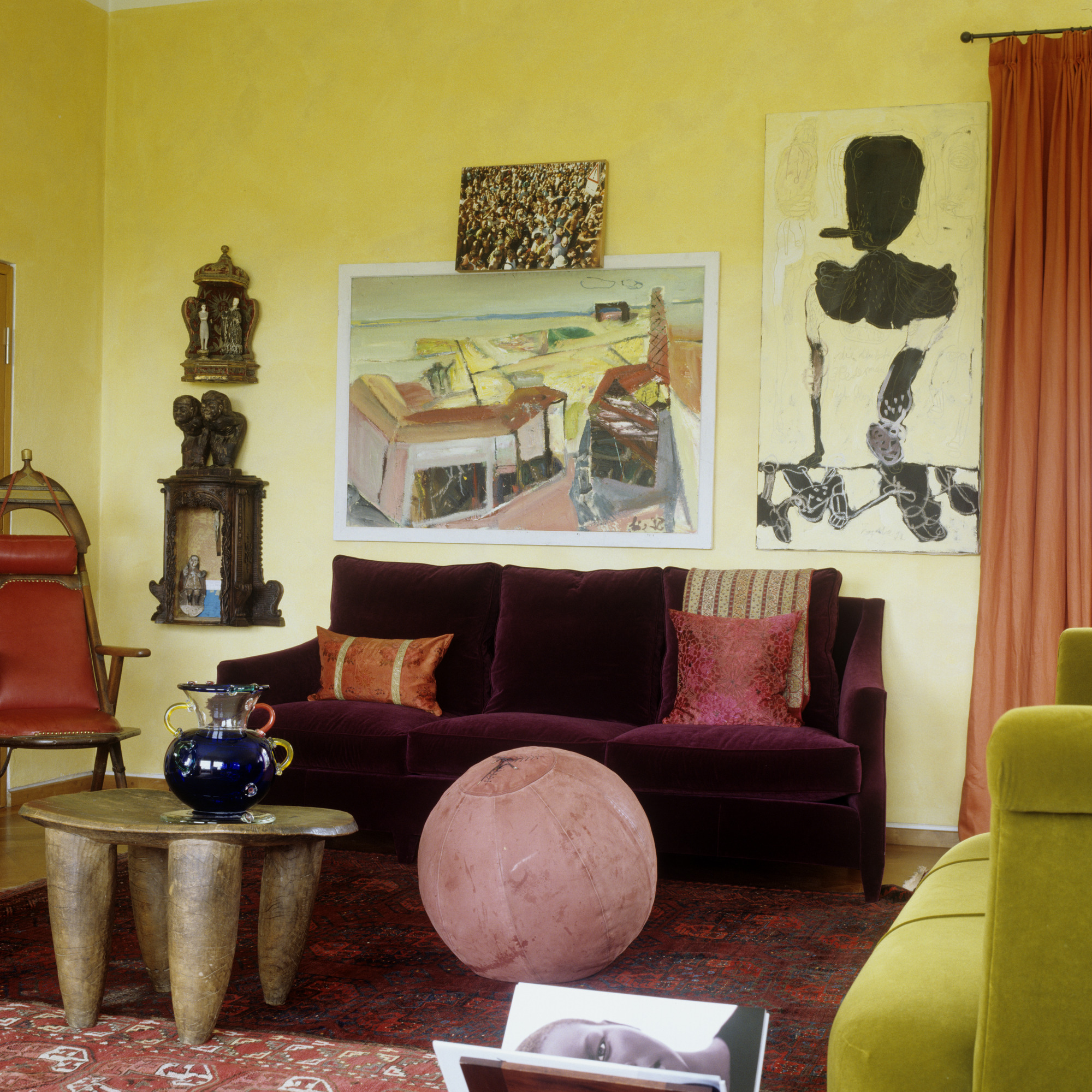
It also helps to create a focal point in your living room, says Bethany Struble, a lead designer at Totum Home.
“This can be a fireplace, a feature wall, or a larger piece of wall art,” she explains, adding that a focal point helps give a space a sense of purpose. Having an intentional focal point in your living room can also help you determine how to orient your furniture.
Consider picking one of these 14 feature wall ideas and build your layout from there.
3. Add multiple mirrors for an optical illusion
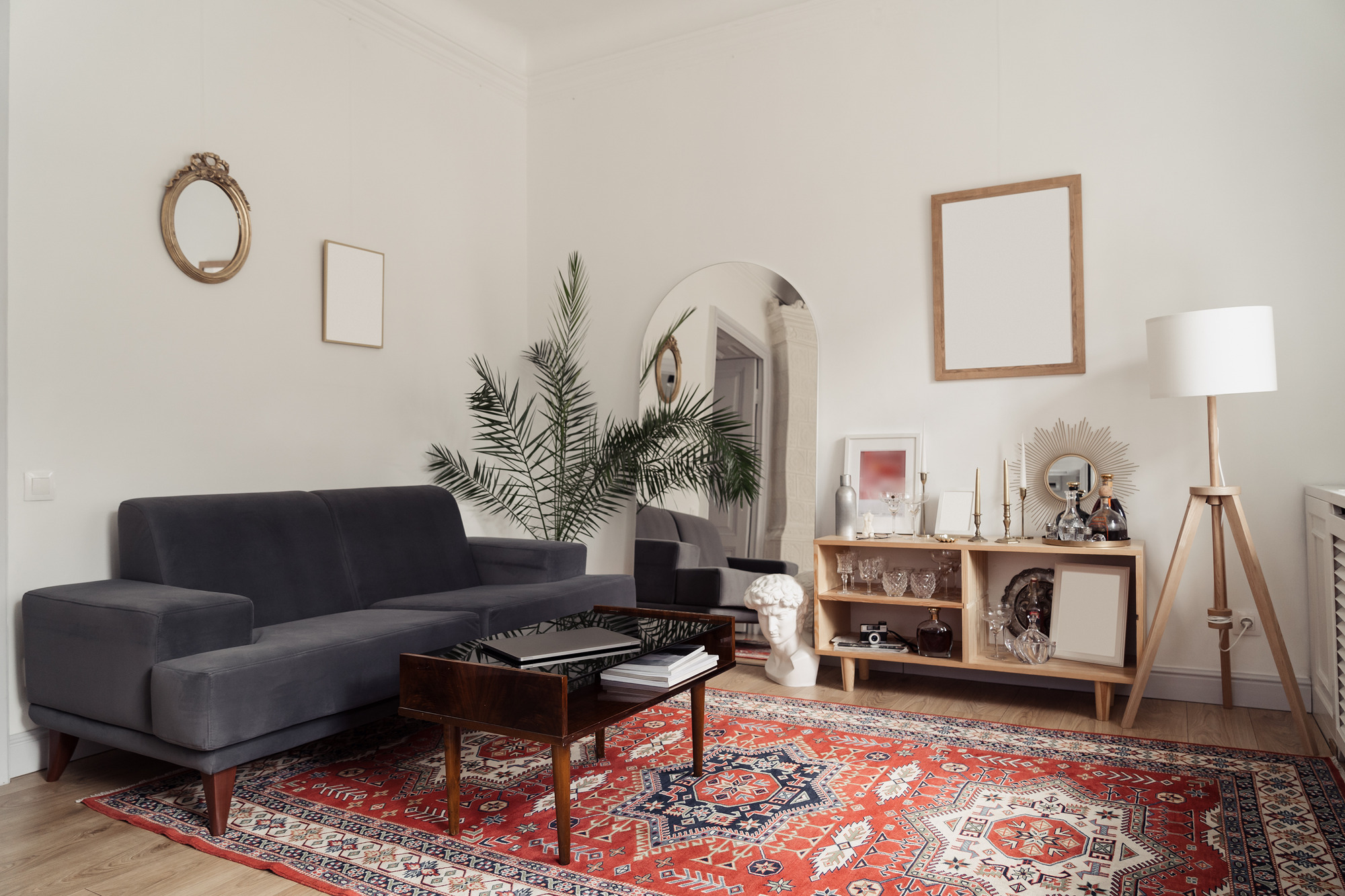
Mirrors, like our favorite Urban Outfitter mirrors, are one of the best ways to open up a space and create the illusion of a larger room, making them another hot tip for arranging a small living room space.
However, Alex says you don’t want to use just one large mirror. “People often make the mistake of using one large mirror, but it’s important to use multiple mirrors to really expand the space,” she notes.
There are lots of small details to pay attention to as even the color of your couch can make your small living room look bigger.
4. Elongate with curtains
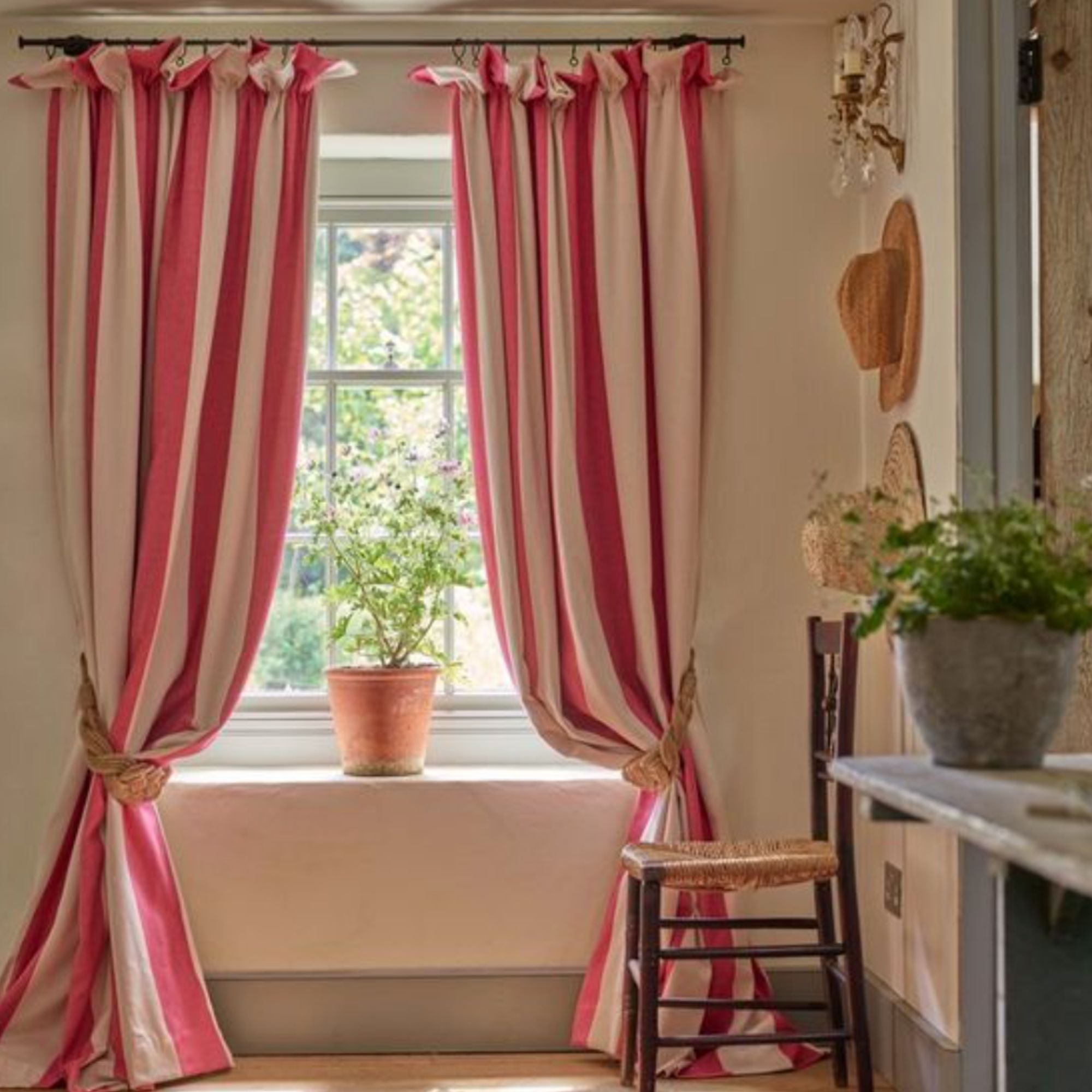
In addition to arranging your furniture, being intentional about accents such as window dressings like these Urban Outfitters curtains, can also help your cause.
When working in a small space, Alex says emphasizing height is essential for creating the illusion of a spacious room.
She says, “Hang your curtain rod high up where the wall meets the ceiling. By putting the curtain rod flush to where the ceiling and the wall meet, with long drapery extending beyond where it touches the floor, it really makes a space feel more ethereal.”
5. Pick a light color rug
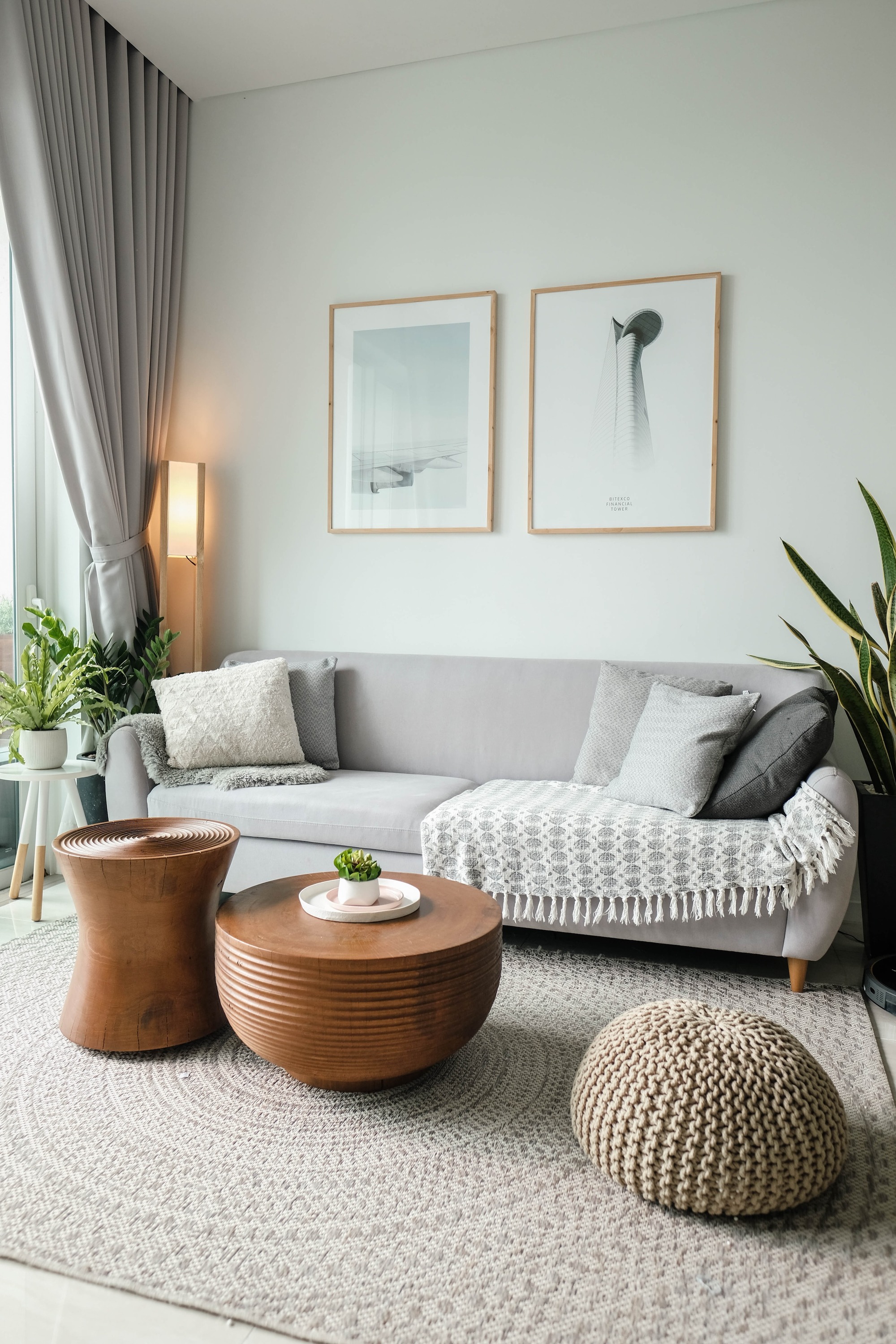
The rug you choose also matters when arranging furniture in a small living room.
“In small spaces, I tend to lean toward a lighter-colored rug,” says Bethany, helping a space feel bigger. This beige Moroccan-style rug available on Amazon will do just the trick to lighten up a small living room.
In addition to choosing light-colored rugs, Bethany says size is also important, especially in small spaces. “You want your rug to be wider than your sofa, at the very least,” she adds.
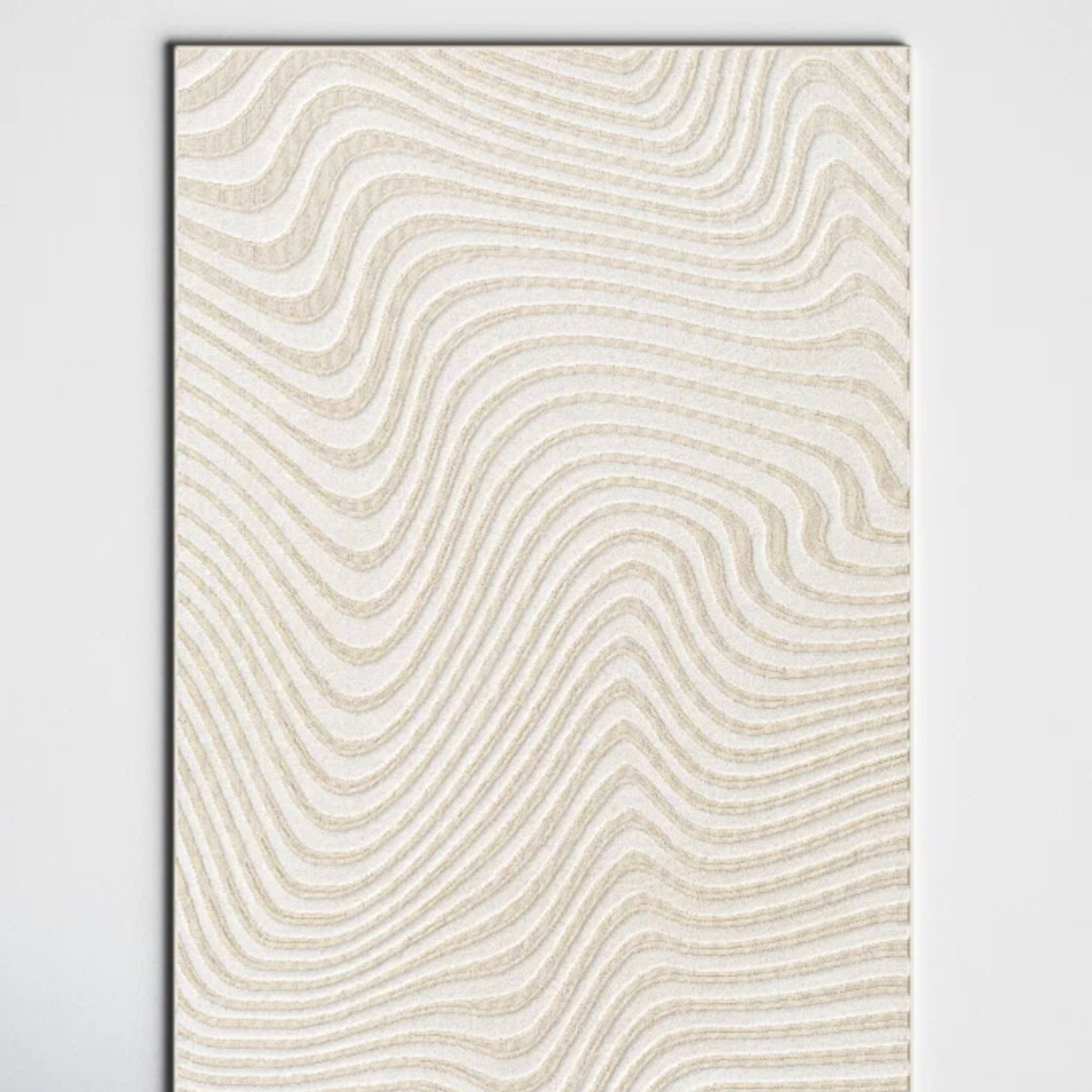
Price: $135
Anchoring furniture with a large area rug can really open up a space, especially in a light hue. We love the Ricki Light Beige/Cream Rug from AllModern. As well as its light, neutral, tones, its subtle print elevates a space with texturising detail.
6. Create zones
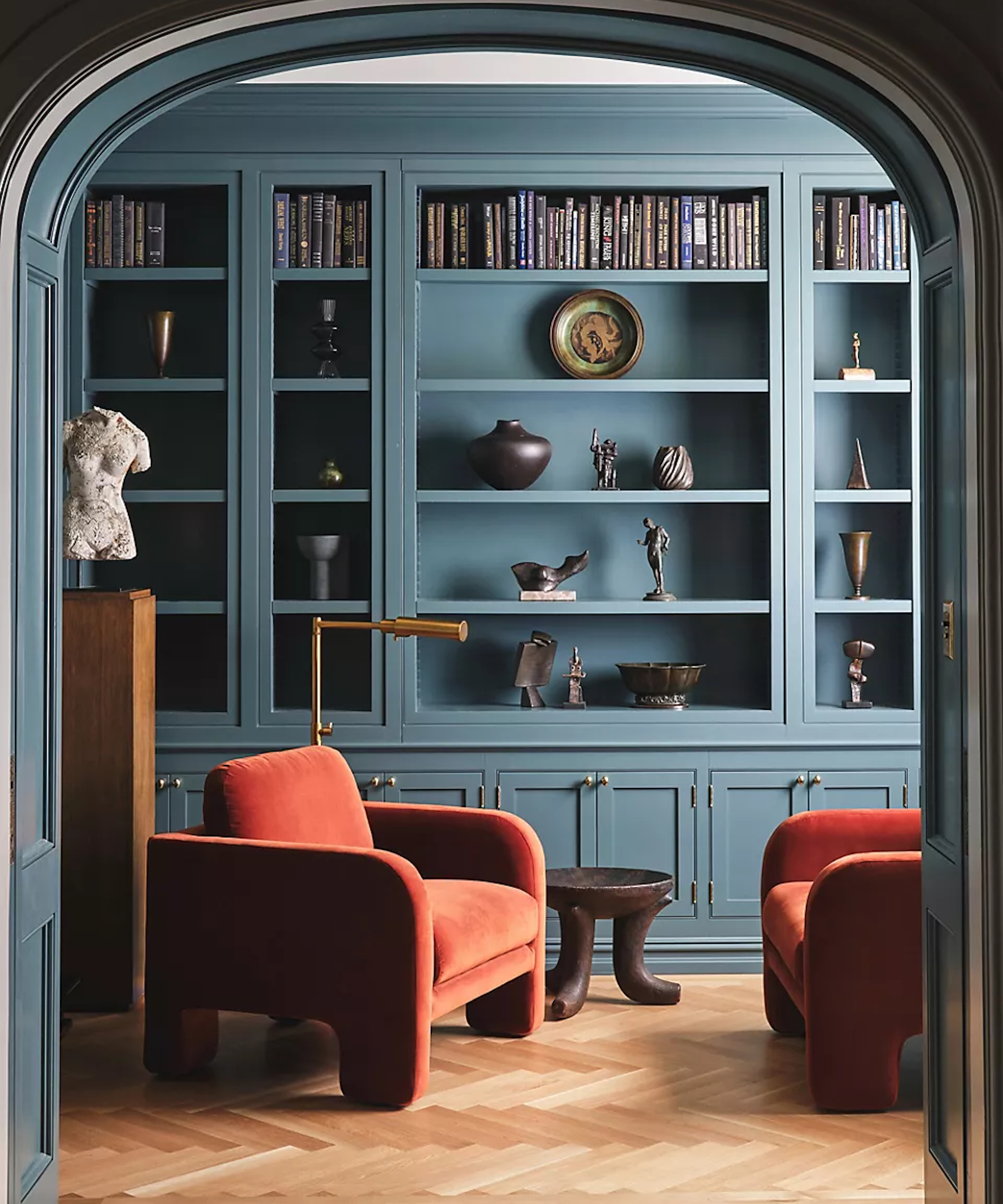
Having intention can pay off in a small space, so designating different zones is also a must.
“Dividing your space up can actually help the room feel larger,” says Bethany. “You can create a reading nook with a small chair, a side table, and a lamp in addition to your main seating area with well-thought out zoning.”
This is great news for those who also need to use their living room space as a small home office, as you can designate an area for your desk, chair, and office essentials.
7. Look for nesting pieces
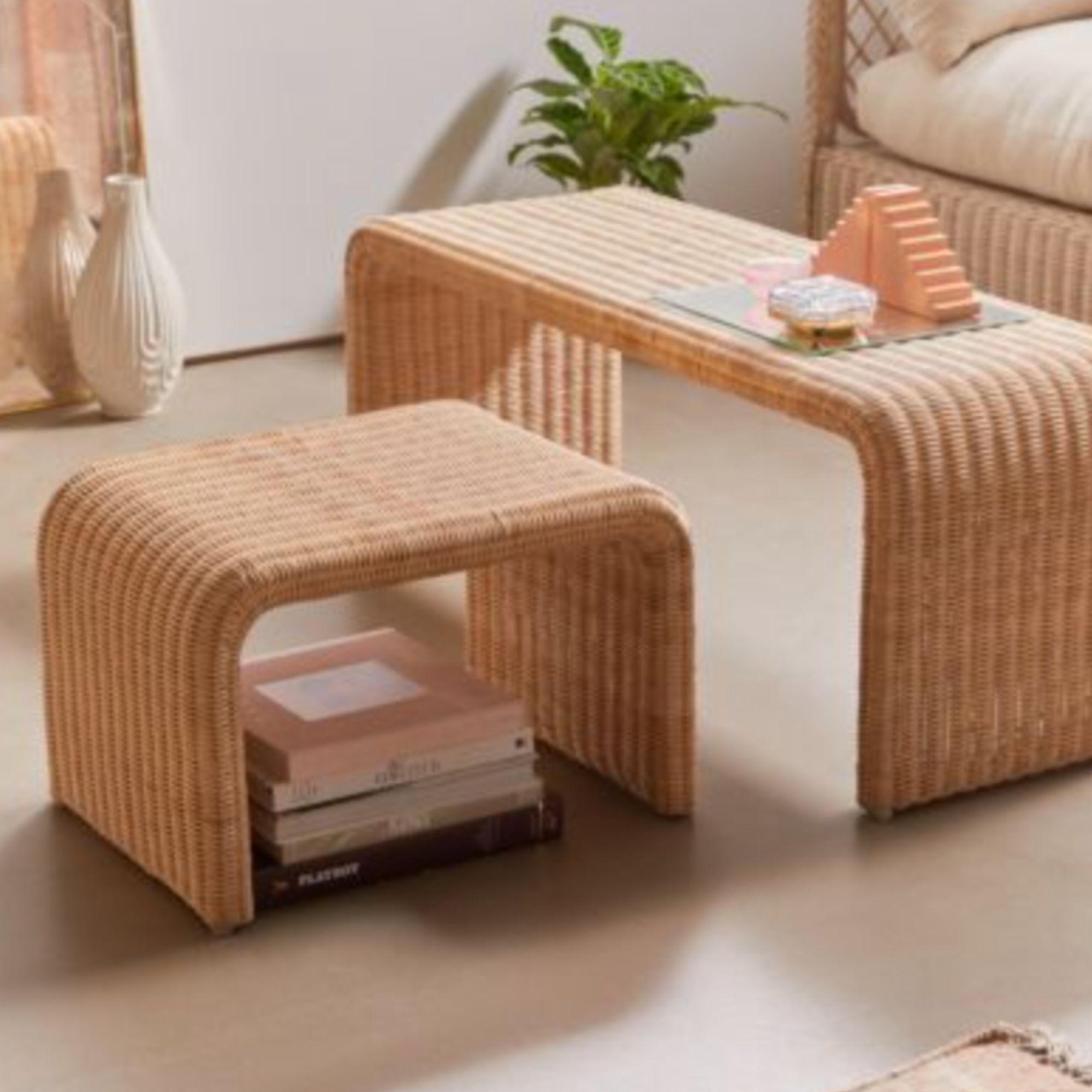
Another way to take advantage of your space is to nest items, leaving less dead — or unusable — space. “Being able to tuck things away when it’s not in use is key,” says Struble.
In actuality, this might look like storing small ottomans under a side table for extra seating, opting for a coffee table with storage features, or even using large cushions on your couch that can double as floor pillows.
These nesting coffee tables available on Wayfair with eye-catching mixed materials can be tucked out of the way at a moment's notice
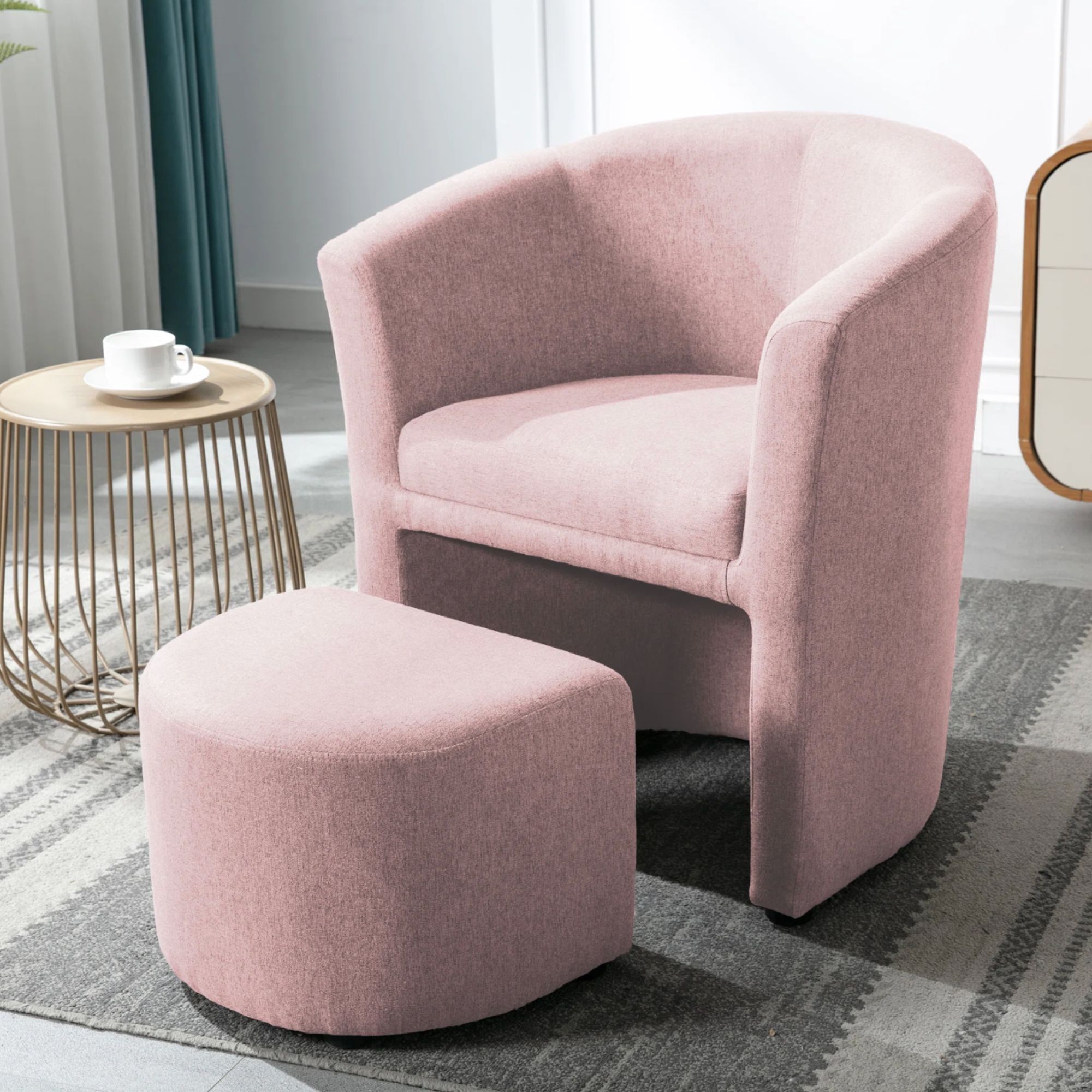
Price: $159.99
If you love an ottoman but don’t want to clutter your space with more furniture, consider an accent chair with built-in storage, such as the Porthos Home Adela Fabric Upholstered Barrel Accent Chair from Wayfair. This sleek accent chair adds a focal touch to a space without feeling too bulky or oversized.
8. Consider floor pillows for extra seating
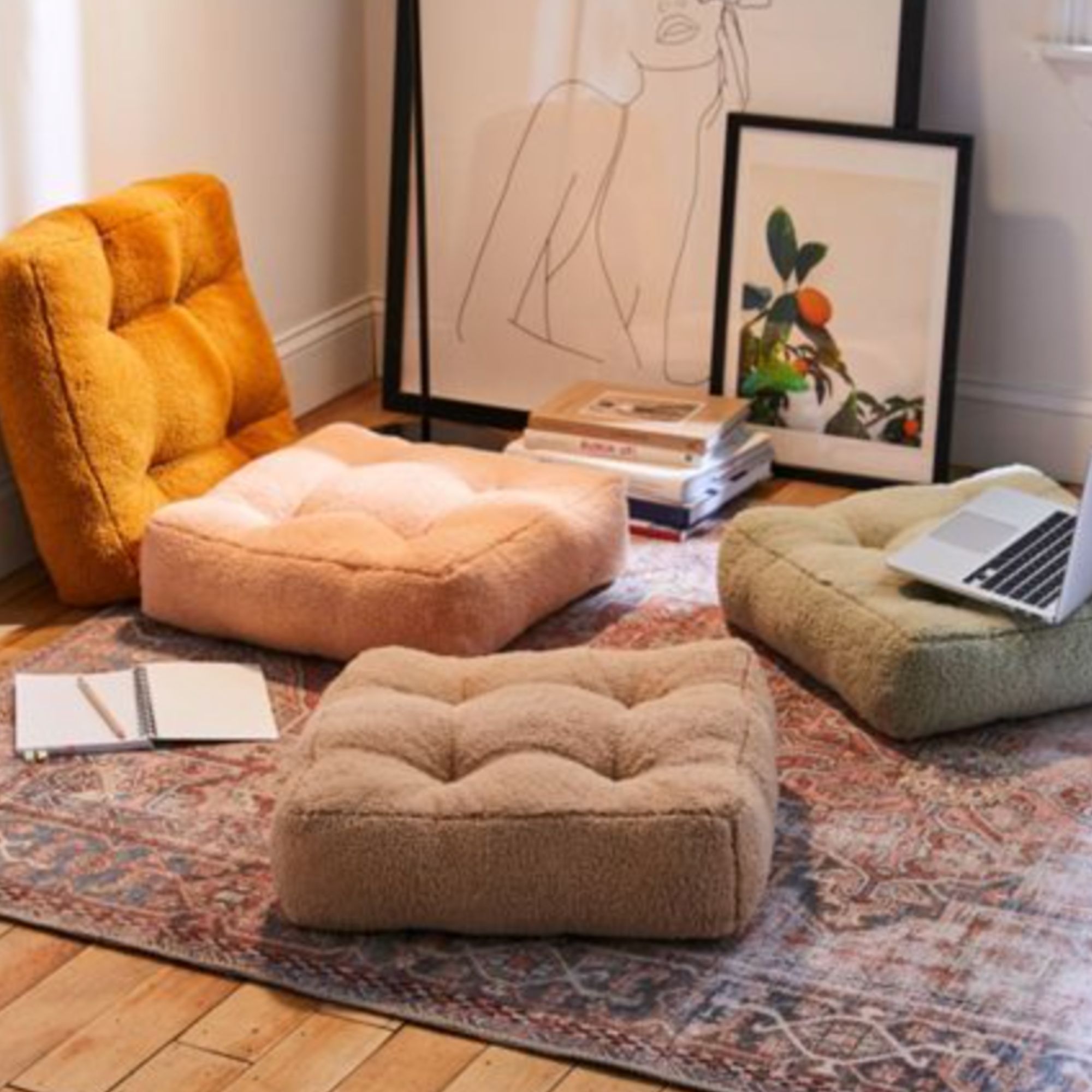
Speaking of floor pillows, Bethany recommends having some on hand for extra seating. “They can stack in the corner or slide under the sofa when not in use, and you can bring them out for when you have guests,” she explains.
Floor pillows, like this set of two floor pillows available from Amazon, are one of the most versatile pieces you can have in your space, as they also work well as seat cushions, or extra-large throw pillows for your couch.
You can also opt for pouf ottomans, which serve a similar purpose in terms of extra seating but are even more versatile.
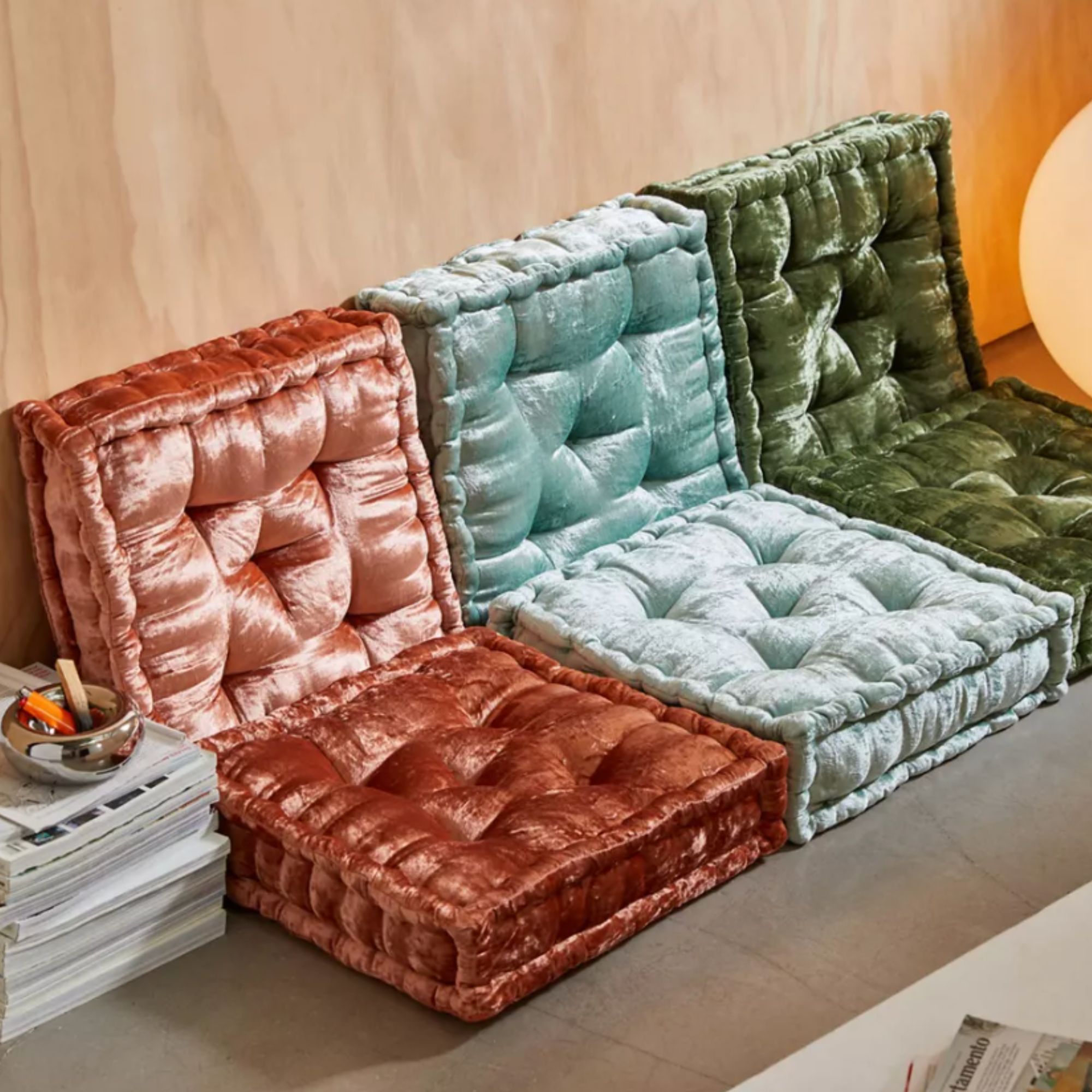
Price: $59
The Ruthie Velvet Floor Pillow from Urban Outfitters has stolen our hearts with its sleek design — perfect for floor seating. They can moonlight as accent pillows, and its square structure makes it easy to stack on a side table shelf when not in use.
FAQs
How do you arrange furniture in a small living room with a TV?
“I would find the sofa placement that makes the most sense in the room and try to position the TV across from the sofa,” says Bethany. In addition to arranging your couch to face the TV, Bass says you can also blend your TV into your decor — which maximizes the smaller space — by creating a gallery wall around the TV. “I recommend something that will not detract your eyes too much,” she says, noting that black and white photos are a great place to start.
How do I maximize space in my small living room?
“Definitely try to find pieces of furniture with multiple functions, like a sofa with hidden storage or a coffee table or ottoman with storage,” says Bethany. She also loves using vertical wall space to keep things off the floor and maximize the overall space. “Mounting a floating bookshelf can feel so much less invasive than a standing bookshelf in a small space,” she notes.
When decorating your small living room, furniture arrangement is important to consider. Where you place your furniture depends entirely on the layout of your space but, in general, design experts recommend orienting your couch to face your TV and incorporating versatile accent furniture that can double as storage, extra seating, and display.
In addition to furniture, it’s also worth considering other design elements that make your space feel bigger, such as placing your curtain rod closer to the ceiling and showcasing floor-length curtains to draw the eye up, and using multiple mirrors instead of one.

Jessie Quinn is a lifestyle writer with words published in The Spruce, Byrdie, Well + Good, Shape, PEOPLE, and more. Jessie has a Bachelor's Degree in Fashion Journalism from Academy of Art University and leans on her background in fashion to inspire readers to hone their personal decor style as if it's their wardrobe. When she's not writing, Jessie can be found browsing the aisles of her local antique stores, creating DIY home decor projects, and taking care of her dozens of houseplants. Her eclectic decor style balances vintage, modern, and artisanal pieces that reflect her artsy style and love for handmade goods.
